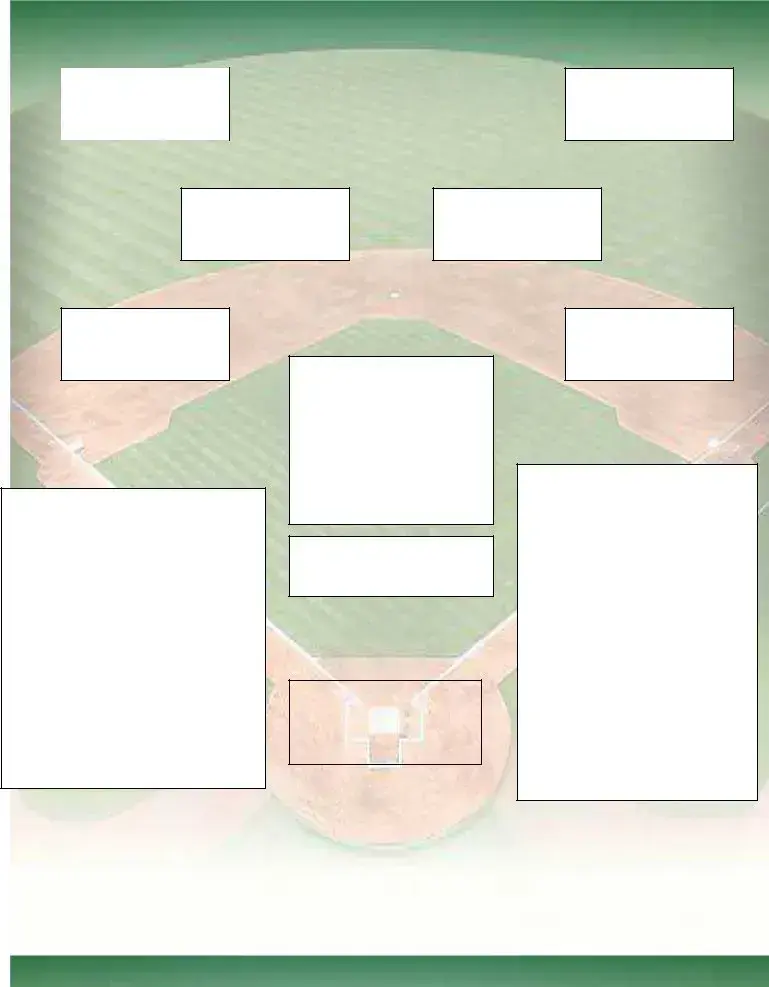Filling out the Baseball Field Lineup form can seem straightforward, yet many individuals make common mistakes that can lead to confusion during the game. One of the first errors is forgetting to include the team name and the opponent's name. These details are essential for clarity. If these sections are skipped, it can create problems when identifying which team is playing.
Another frequent mistake involves the difficulty in arranging the batting order correctly. Participants often neglect to follow the proper sequencing of players, which may confuse teammates. Keeping the lineup organized ensures that everyone knows their place, enhancing the flow of the game.
Many people also overlook the importance of completing the depth chart. The depth chart demonstrates the strategic layout for the game, indicating which players will step in if a starter is unavailable. Incomplete information here could result in last-minute adjustments if a player cannot participate.
In the section dedicated to pitchers, a common error is failing to indicate whether a player is available or not available. This information is critical for planning pitching strategy. If this isn’t clear, coaches may be caught off-guard during the game.
Some individuals mistakenly list players in the wrong section, such as placing bench players into the starting lineup. This will only confuse coaches and players alike. Proper categorization of players ensures that everyone understands their roles and responsibilities clearly.
Not providing clear information in the starting pitcher section can lead to significant issues. Coaches depend on this data to decide who will begin the game. Failing to fill out this part can lead to confusion and disrupt the team's preparedness.
Lastly, forgetting to include the General Manager's signature might seem minor but can delay the official acceptance of the lineup. A complete lineup encourages accountability and allows team management to maintain accurate records.
Overall, double-checking each section ensures that the Baseball Field Lineup form is filled out perfectly. Attention to detail is vital to avoid these common mistakes, enhancing the team’s readiness and performance.

